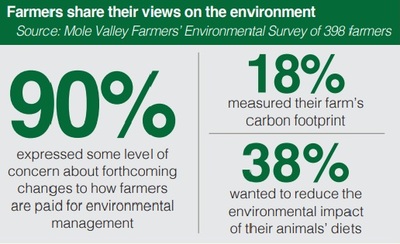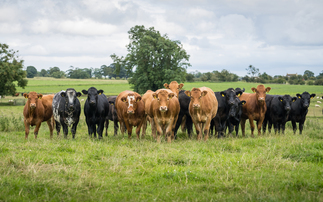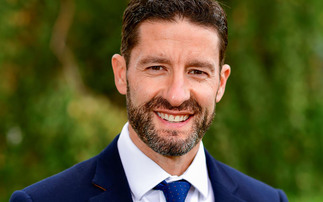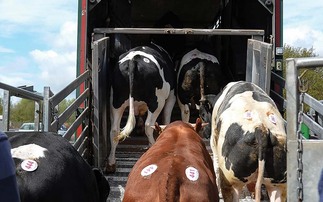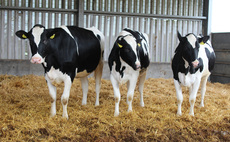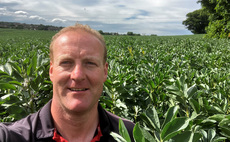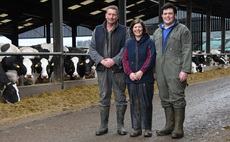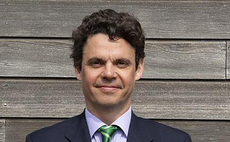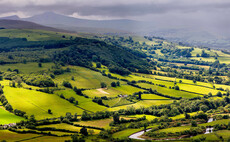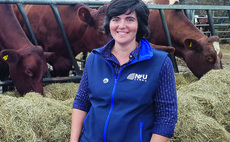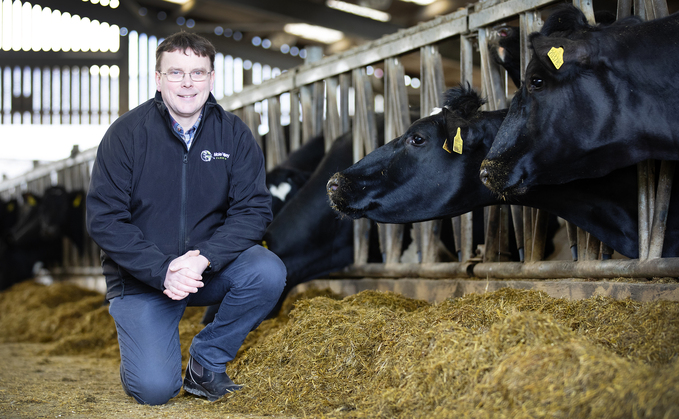
One Northumberland dairy farmer has identified ways to potentially reduce the carbon footprint of purchased feed by a predicted 28% and, in doing so, help lower his overall environmental impact.
Making feed swaps in favour of British-grown protein has the potential to dramatically cut the carbon footprint associated with bought-in feeds at Thornington Farm, Cornhill on Tweed.
Calculations carried out by Mole Valley �������� show that removing soya and palm from the compound and blend and replacing them with British-grown protected rape could cut the predicted carbon footprint of bought-in feeds from 0.32kg CO2e/litre to 0.23kg CO2e/litre (see table).
Tom Neill admits to being surprised by how much of an impact these changes could make, while still rationing for the same level of production.
He says: I am surprised it has reduced by so much. It is the first time I have been able to look at a figure for bought-in feed. If you can put a figure on it and compare, it is very useful.
I have been looking at removing soya and palm, but this will give me a push to take it further.
As part of its Climate Positive Agriculture initiative, Mole Valley �������� has developed Precision Nutrition rationing software to predict the methane output, nitrogen excretion and overall carbon footprint of a specific diet.
These figures have proven a useful guide for Mr Neill, with the support of the companys nutritionist Darren Wilkinson.
As an Arla 360 farmer, Mr Neill is already working to lower the total environmental impact of his 320-cow British Friesian herd from a current 1.18kg CO2e/kg of fat and protein corrected milk.
This fits with Arlas targets for its producers to reduce their emissions by 30% between 2015 and 2030, and achieve net zero by 2050.
Steps he has already taken include:
- Lowering age at first calving from 30 months to 26 months. This means there are fewer unproductive animals which require feeding, helping with the farms carbon footprint.
- Applying slurry with a dribble bar instead of a splash plate to reduce emissions.
- Increasing milk from forage from 2,636 litres per cow per year to 3,018 litres, from total yields of 7,900 litres. This has helped reduce feed rate per litre.
Climate Check reports carried out by Arla also highlight feed supply as an area for attention, with Mole Valley �������� experience suggesting it represents about 30% of a farms total carbon footprint.
Consequently, it is something Mr Neill is keen to address. Arla always says the lower the carbon footprint, the higher your profits will be.
Labelling
The fact Mole Valley �������� includes the carbon footprint on the label of all of its conventional compounds and blends will also help with future decision-making. Mr Neill says: There is a whole range of milking parlour concentrate available on the market. If Mole Valley is including the carbon footprint on the specification sheet, it is going to be a consideration.
Predicted reduction in carbon footprint per litre in relation to purchased feed by changing the make-up of the ration at Thornington Farm (Calculated using Mole Valley �������� Precision Nutrition rationing programme)
Original diet (Blend including soya. Compound including Hipro soya, palm kernels and protected fat) |
Suggested lower CFP diet (Soya removed from blend and replaced with British rumen protected rape. Hipro soya, palm kernels and protected fat removed from compound and British protected rape added). | |
| Predicted carbon footprint 0.32 0.23 (kg CO2e/litre) | 0.32 | 0.23 |
